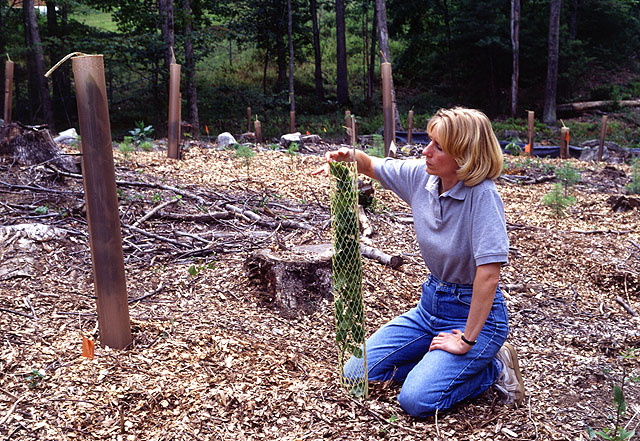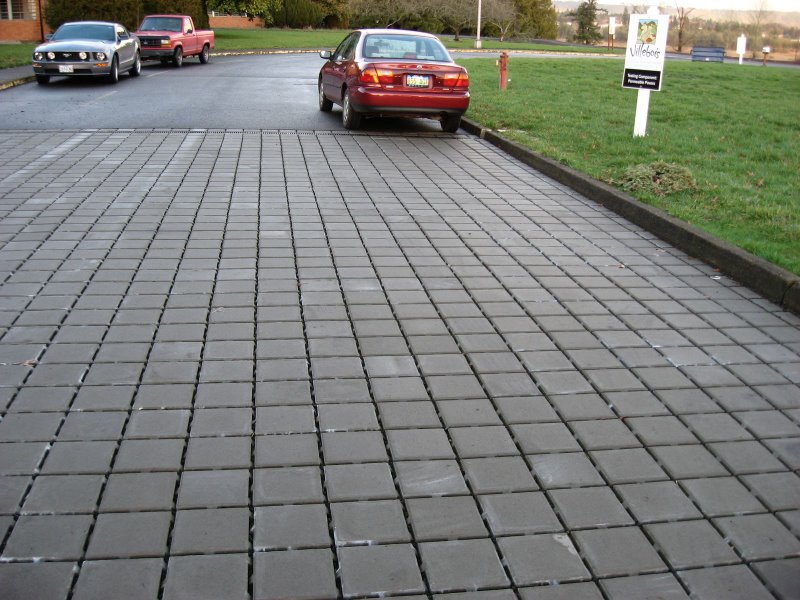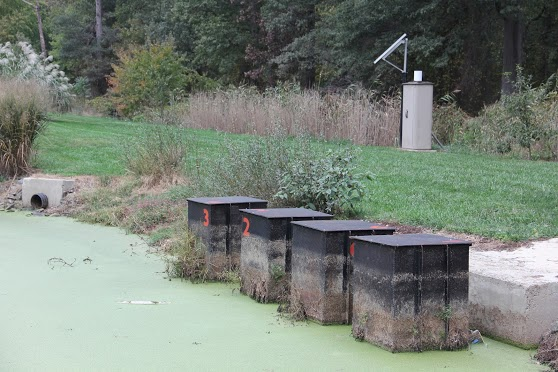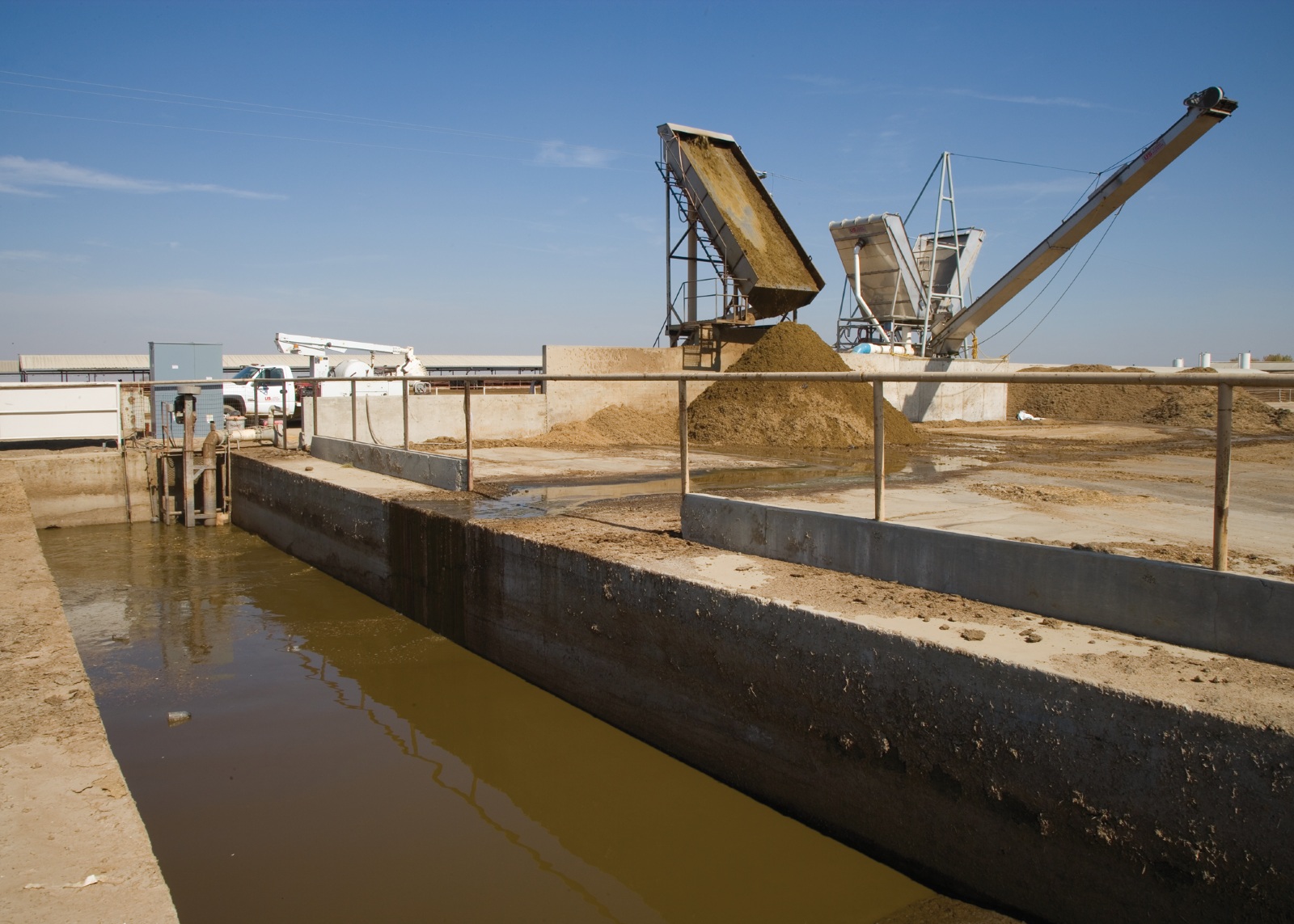-
Download:
My Results |
All BMPs
Palm Oil Plantation Erosion Control Measures
Category: Erosion Control
Practice Type: Management
Landuse/Agriculture Type: Palm Oil
Climatic Zones: Tropical
Regions: South Asia, South Africa, South America
Pollutants Treated: Nitrogen, Phosphorus, Sediment
Description: During clearing and replanting of palm oil plantations, the period of time that the soil is exposed without ground cover should be minimized. While trees are still small, cover crops can be established to reduce erosion while building up organic matter levels in soil through leaf and plant litter. Fronds and other materials removed during crop harvesting or pruning can winrowed (banked into ridges). The winrows can be placed along the contour or used to reinforce existing terraces to slow the flow or runoff. This practice minimizes soil losses and runoff and also limits the loss of nutrients.1
Implementation Considerations: Expert advice is recommended for specific physical measures required to reduce slope length and erosion when slopes are more than 10 degrees and soils are sandy.
Scalable to small farms? Yes
1 "Palm Oil BMP: Maintaining Soil Fertility." World Wildlife Fund for Nature. Web. 1 Aug. 2014. http://wwf.panda.org/what_we_do/footprint/agriculture/palm_oil/solutions/roundtable_on_sustainable_palm_oil/better_management_practices/soil_fertility/.
Practice Type: Management
Landuse/Agriculture Type: Palm Oil
Climatic Zones: Tropical
Regions: South Asia, South Africa, South America
Pollutants Treated: Nitrogen, Phosphorus, Sediment
Description: During clearing and replanting of palm oil plantations, the period of time that the soil is exposed without ground cover should be minimized. While trees are still small, cover crops can be established to reduce erosion while building up organic matter levels in soil through leaf and plant litter. Fronds and other materials removed during crop harvesting or pruning can winrowed (banked into ridges). The winrows can be placed along the contour or used to reinforce existing terraces to slow the flow or runoff. This practice minimizes soil losses and runoff and also limits the loss of nutrients.1
Implementation Considerations: Expert advice is recommended for specific physical measures required to reduce slope length and erosion when slopes are more than 10 degrees and soils are sandy.
Scalable to small farms? Yes
1 "Palm Oil BMP: Maintaining Soil Fertility." World Wildlife Fund for Nature. Web. 1 Aug. 2014. http://wwf.panda.org/what_we_do/footprint/agriculture/palm_oil/solutions/roundtable_on_sustainable_palm_oil/better_management_practices/soil_fertility/.
Permanent Land Use Conversion
 Horticulturist Carol Schumann evaluates growth of a Chinese chestnut seedling, Castanea mollissima, in a woodland agroforestry planting. Photo by Susan Boyer. Photo courtesy of USDA ARS.
Horticulturist Carol Schumann evaluates growth of a Chinese chestnut seedling, Castanea mollissima, in a woodland agroforestry planting. Photo by Susan Boyer. Photo courtesy of USDA ARS.
Practice Type: Land Conversion
Landuse/Agriculture Type: Row Crop, Pasture, Fodder, Rice, Palm Oil
Climatic Zones: Temperate, Semiarid, Tropical
Regions: North America, South Asia, South Africa, Europe
Pollutants Treated: Nitrogen, Phosphorus, Sediment
Description: Permanent land use conversion refers to taking intensively used agricultural land out of production and establishing and maintaining perennial grass or forest cover. Converting intensively used agricultural land into grass or forest reduces nitrogen and phosphorus losses and lowers inputs.1
Implementation Considerations: Permanent land use conversion sacrifices yields from productive farmland in order to reduce nutrient and sediment losses. Agroforestry practices can enhance productivity of these lands.
Scalable to small farms? Yes
Scaling Considerations: Can be combined with agroforestry and silvapasture to provide farmer returns from eroded, degraded agricultural areas.
1 "EU Database of Best Practices." Living Water Exchange: Promoting Replication of Good Practices for Nutrient Reduction and Joint Collaboration in Central and Eastern Europe. Web. Sept. 2013. http://nutrient2.iwlearn.org/nutrient-reduction-practices/eu-database-of-practices/view .
Permeable Pavement and Pavers
Category: Infiltration, Filtration
Practice Type: Structural
Climatic Zones: Temperate, Tropical
Regions: North America
Pollutants Treated: Nitrogen, Phosphorus, Sediment
N Efficiency1: 10-80%
P Efficiency1: 20-80%
S Efficiency1: 55-85%
Description: Permeable pavement is pavement that reduces runoff volume and treats water quality through both infiltration and filtration mechanisms. Water filters through open voids in the pavement surface to a washed gravel subsurface storage reservoir where it slowly infiltrates into the underlying soils or exists via an underdrain. 2
Implementation Considerations: Design calculations must be done by a qualified engineer familiar with hydrology and hydraulics. This practice will have detailed design standards for slope, velocity, infiltration rates, width, residence time, manning n value, maintenance, pipe placement, soil amendments, and various other design elements. Permeable pavement requires high operation or maintenance to prevent clogging from trapped suspended solids.
Scalable to small farms? No
1 "Documentation: Source Data, BMP Effectiveness Values." Chesapeake Assessment Scenario Tool. Web. 2013. http://casttool.org/Documentation.aspx .
2 Simpson, Thomas, and Sarah Weammert. "Developing Best Management Practice Definitions and Effectiveness Estimates for Nitrogen, Phosphorus and Sediment in the Chesapeake Bay Watershed." Chesapeake Bay Program. Dec. 2009. Web. June 2013. http://archive.chesapeakebay.net/pubs/BMP_ASSESSMENT_REPORT.pdf.
Practice Type: Structural
Climatic Zones: Temperate, Tropical
Regions: North America
Pollutants Treated: Nitrogen, Phosphorus, Sediment
N Efficiency1: 10-80%
P Efficiency1: 20-80%
S Efficiency1: 55-85%
Description: Permeable pavement is pavement that reduces runoff volume and treats water quality through both infiltration and filtration mechanisms. Water filters through open voids in the pavement surface to a washed gravel subsurface storage reservoir where it slowly infiltrates into the underlying soils or exists via an underdrain. 2
Implementation Considerations: Design calculations must be done by a qualified engineer familiar with hydrology and hydraulics. This practice will have detailed design standards for slope, velocity, infiltration rates, width, residence time, manning n value, maintenance, pipe placement, soil amendments, and various other design elements. Permeable pavement requires high operation or maintenance to prevent clogging from trapped suspended solids.
Scalable to small farms? No
1 "Documentation: Source Data, BMP Effectiveness Values." Chesapeake Assessment Scenario Tool. Web. 2013. http://casttool.org/Documentation.aspx .
2 Simpson, Thomas, and Sarah Weammert. "Developing Best Management Practice Definitions and Effectiveness Estimates for Nitrogen, Phosphorus and Sediment in the Chesapeake Bay Watershed." Chesapeake Bay Program. Dec. 2009. Web. June 2013. http://archive.chesapeakebay.net/pubs/BMP_ASSESSMENT_REPORT.pdf.
Phosphorus-Sorbing Materials (PSMs)
Category: Drainage Control
Practice Type: Structural
Climatic Zones: Temperate, Tropical
Regions: North America, Europe
Pollutants Treated: Phosphorus
N Efficiency1: 0%
P Efficiency1: 40%
S Efficiency1: 0%
Description: Phosphorus sorbing materials (PSMs), such as gypsum, drinking water treatment residuals, or acid mine drainage residue, can be used to filter phosphorus from runoff. Typically, a phosphorus removal structure is constructed to intercept runoff from ditches. PSMs are placed in the removal structure units in order to filter phosphorus from the runoff. This is an effective measure to capture significant amounts of dissolved phosphorus in agricultural drainage water. Once the PSMs are saturated they can be removed and replaced with fresh material. 2
Implementation Considerations: Phosphorus sorbing materials (PSMs) are most effective where there are shallow groundwater levels requiring drainage ditches for agricultural production. PSMs must be replaced regularly to maintain their effectiveness.
Scalable to small farms? No
1 "Documentation: Source Data, BMP Effectiveness Values." Chesapeake Assessment Scenario Tool. Web. 2013. http://casttool.org/Documentation.aspx .
2 Estimates of County-level Nitrogen and Phosphorus Data for Use in Modeling Pollutant Reduction Documentation for Scenario Builder Version 2.2." Chesapeake Bay. Dec. 2010. Web. May 2013. http://archive.chesapeakebay.net/pubs/SB_V22_Final_12_31_2010.pdf.
Practice Type: Structural
Climatic Zones: Temperate, Tropical
Regions: North America, Europe
Pollutants Treated: Phosphorus
N Efficiency1: 0%
P Efficiency1: 40%
S Efficiency1: 0%
Description: Phosphorus sorbing materials (PSMs), such as gypsum, drinking water treatment residuals, or acid mine drainage residue, can be used to filter phosphorus from runoff. Typically, a phosphorus removal structure is constructed to intercept runoff from ditches. PSMs are placed in the removal structure units in order to filter phosphorus from the runoff. This is an effective measure to capture significant amounts of dissolved phosphorus in agricultural drainage water. Once the PSMs are saturated they can be removed and replaced with fresh material. 2
Implementation Considerations: Phosphorus sorbing materials (PSMs) are most effective where there are shallow groundwater levels requiring drainage ditches for agricultural production. PSMs must be replaced regularly to maintain their effectiveness.
Scalable to small farms? No
1 "Documentation: Source Data, BMP Effectiveness Values." Chesapeake Assessment Scenario Tool. Web. 2013. http://casttool.org/Documentation.aspx .
2 Estimates of County-level Nitrogen and Phosphorus Data for Use in Modeling Pollutant Reduction Documentation for Scenario Builder Version 2.2." Chesapeake Bay. Dec. 2010. Web. May 2013. http://archive.chesapeakebay.net/pubs/SB_V22_Final_12_31_2010.pdf.
Physical Manure Treatment (Solids Separation)
Category: Manure Management
Practice Type: Structural
Landuse/Agriculture Type: Animal Confinement
Climatic Zones: Temperate, Semiarid, Tropical
Regions: North America, South Asia, Europe
Pollutants Treated: Nitrogen, Phosphorus
N Efficiency1: 20-30%
P Efficiency1: 35%
Description: Physical manure treatment is the process of collecting, treating, storing, and separating the liquid portion of manure waste from the solid portion. Separation is attained by trapping the particles on a mechanical screen or sieve or by centrifugation; or in the case of gravity separation, with a basin that provides the proper conditions of velocity/retention to allow particles to settle. This treatment helps to remove nutrients from the solids.2
Implementation Considerations: Settling basins are generally less expensive than mechanical separators. However, settling basins require more land and labor. To minimize the effects of storage facilities on nearby water bodies, animal waste management systems should not be located in flood plains.
Scalable to small farms? No
1 "Documentation: Source Data, BMP Effectiveness Values." Chesapeake Assessment Scenario Tool. Web. 2013. http://casttool.org/Documentation.aspx .
2 Kintzer, Barry, and David Moffitt. "Physical Manure Treatment (Solids Separation)." SERA-17, Minimizing Phosphorus Losses from Agriculture. Web. Jan. 2014. http://www.sera17.ext.vt.edu/Documents/BMP_physical_manure.pdf.; "Best Management Practices, Today's Agriculture: A Responsible Legacy." Nutrient Best Management Practices. Web. Aug. 2013. http://dda.delaware.gov/nutrients/D17762BestMgmtbklt.pdf .
Practice Type: Structural
Landuse/Agriculture Type: Animal Confinement
Climatic Zones: Temperate, Semiarid, Tropical
Regions: North America, South Asia, Europe
Pollutants Treated: Nitrogen, Phosphorus
N Efficiency1: 20-30%
P Efficiency1: 35%
Description: Physical manure treatment is the process of collecting, treating, storing, and separating the liquid portion of manure waste from the solid portion. Separation is attained by trapping the particles on a mechanical screen or sieve or by centrifugation; or in the case of gravity separation, with a basin that provides the proper conditions of velocity/retention to allow particles to settle. This treatment helps to remove nutrients from the solids.2
Implementation Considerations: Settling basins are generally less expensive than mechanical separators. However, settling basins require more land and labor. To minimize the effects of storage facilities on nearby water bodies, animal waste management systems should not be located in flood plains.
Scalable to small farms? No
1 "Documentation: Source Data, BMP Effectiveness Values." Chesapeake Assessment Scenario Tool. Web. 2013. http://casttool.org/Documentation.aspx .
2 Kintzer, Barry, and David Moffitt. "Physical Manure Treatment (Solids Separation)." SERA-17, Minimizing Phosphorus Losses from Agriculture. Web. Jan. 2014. http://www.sera17.ext.vt.edu/Documents/BMP_physical_manure.pdf.; "Best Management Practices, Today's Agriculture: A Responsible Legacy." Nutrient Best Management Practices. Web. Aug. 2013. http://dda.delaware.gov/nutrients/D17762BestMgmtbklt.pdf .



